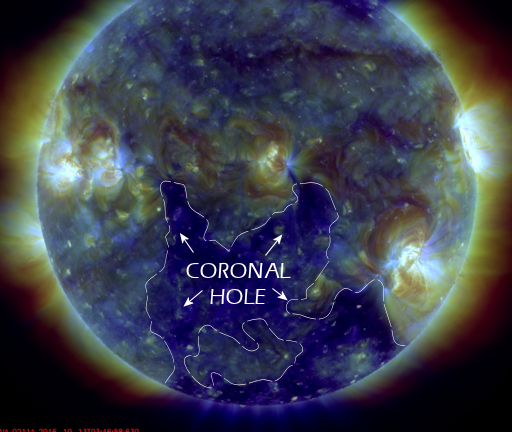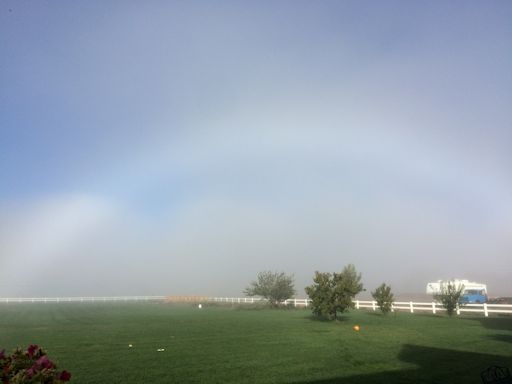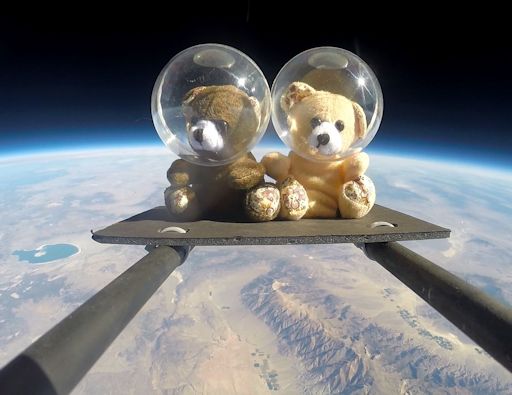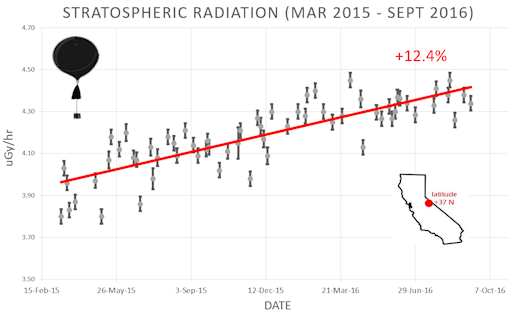Directly under the Arctic Circle! Marianne's Arctic Xpress in Tromsø offers fjord, whale and wildlife tours by day, aurora tours by night. Book Now and get a 10% discount on combo day and night adventures. | | | GEOMAGNETIC STORMS UNDERWAY: Geomagnetic activity is intensifying as Earth passes through the wake of a CME that hit our planet yesterday. Currently, a G2-class storm is in progress. Polar sky watchers should be alert for auroras on Oct. 13-14. [photo gallery] WHAT'S NEXT? On Oct. 15th, another disturbance is expected to hit Earth's magnetic field. This time it's coming from a coronal hole--a gap in the sun's atmosphere from which solar wind flows: 
NASA's Solar Dynamics Observatory took this picture on Oct. 13th. It shows the dark coronal hole pointing almost directly at Earth. At the leading edge of the emerging solar wind stream is a co-rotating interaction region (CIR)--that is, a transition zone between slow- and fast-moving solar wind. Shock waves and density gradients in CIRs often go a good job sparking auroras, so when it arrives on Oct. 15th polar auroras are likely. Stay tuned for pretty pictures. Free: Aurora Alerts. Realtime Aurora Photo Gallery WHITE RAINBOW: On Oct 10th in Prosser, Missouri, the day began with a layer of fog blanketing the landscape. As the sun came up, "I noticed a beam of sunlight piercing the mist and landing in my backyard," says resident Juli McGahey. "I went outside and noticed a beautiful white rainbow." 
"I couldn't believe what I was seeing so I took this picture to show my husband!" she says.
In fact, this is a fogbow--a close cousin of the rainbow. Both rainbows and fogbows are caused by light reflected from water droplets. When the droplets are large (rain), they act like prisms, spreading the colors wide for easy visibility. When the droplets are small (fog), the prism-action is reduced, and colors are smeared together into a ghostly-white arc.
Look for them on foggy mornings whenever sunlight lances through the dispersing mist. They are less colorful than rainbows, but in their own way just as beautiful. Realtime Space Weather Photo Gallery URSUS STRATOSPHERUS: To fund their cosmic ray research, the students of Earth to Sky Calculus have flown 20 pairs of brown bears to the edge of space. Get your own pair for only $39.95--space helmets included. They make great gifts and Christmas stocking stuffers. Each adorable duo comes with a greeting card showing the bears in flight and certifying their trip to the stratosphere. 
More funky edge-of-space gifts may be found in the Earth to Sky store. All proceeds support cosmic ray balloon launches and STEM education.
Realtime Airglow Photo Gallery
Realtime Sprite Photo Gallery
| | Cosmic Rays in the Atmosphere |
Updated: Sept. 29 2016 // Next Flight: Oct. 1, 2016
Sept. 20, 2016: Readers, thank you for your patience while we continue to develop this new section of Spaceweather.com. We've been working to streamline our data reduction, allowing us to post results from balloon flights much more rapidly, and we have developed a new data product, shown here: 
This plot displays radiation measurements not only in the stratosphere, but also at aviation altitudes. Dose rates are expessed as multiples of sea level. For instance, we see that boarding a plane that flies at 25,000 feet exposes passengers to dose rates ~10x higher than sea level. At 40,000 feet, the multiplier is closer to 50x. These measurements are made by our usual cosmic ray payload as it passes through aviation altitudes en route to the stratosphere over California. What is this all about? Approximately once a week, Spaceweather.com and the students of Earth to Sky Calculus fly space weather balloons to the stratosphere over California. These balloons are equipped with radiation sensors that detect cosmic rays, a surprisingly "down to Earth" form of space weather. Cosmic rays can seed clouds, trigger lightning, and penetrate commercial airplanes. Furthermore, there are studies ( #1, #2, #3, #4) linking cosmic rays with cardiac arrhythmias and sudden cardiac death in the general population. Our latest measurements show that cosmic rays are intensifying, with an increase of more than 12% since 2015: 
Why are cosmic rays intensifying? The main reason is the sun. Solar storm clouds such as coronal mass ejections (CMEs) sweep aside cosmic rays when they pass by Earth. During Solar Maximum, CMEs are abundant and cosmic rays are held at bay. Now, however, the solar cycle is swinging toward Solar Minimum, allowing cosmic rays to return. Another reason could be the weakening of Earth's magnetic field, which helps protect us from deep-space radiation. The radiation sensors onboard our helium balloons detect X-rays and gamma-rays in the energy range 10 keV to 20 MeV. These energies span the range of medical X-ray machines and airport security scanners. The data points in the graph above correspond to the peak of the Reneger-Pfotzer maximum, which lies about 67,000 feet above central California. When cosmic rays crash into Earth's atmosphere, they produce a spray of secondary particles that is most intense at the entrance to the stratosphere. Physicists Eric Reneger and Georg Pfotzer discovered the maximum using balloons in the 1930s and it is what we are measuring today. Every night, a network of NASA all-sky cameras scans the skies above the United States for meteoritic fireballs. Automated software maintained by NASA's Meteoroid Environment Office calculates their orbits, velocity, penetration depth in Earth's atmosphere and many other characteristics. Daily results are presented here on Spaceweather.com. On Oct. 13, 2016, the network reported 25 fireballs.
(19 sporadics, 2 Orionids, 1 epsilon Geminid, 1 Southern Taurid, 1 chi Taurid, 1 lambda Draconid)  In this diagram of the inner solar system, all of the fireball orbits intersect at a single point--Earth. The orbits are color-coded by velocity, from slow (red) to fast (blue). [Larger image] [movies] Potentially Hazardous Asteroids ( PHAs) are space rocks larger than approximately 100m that can come closer to Earth than 0.05 AU. None of the known PHAs is on a collision course with our planet, although astronomers are finding new ones all the time. On October 13, 2016 there were potentially hazardous asteroids. Notes: LD means "Lunar Distance." 1 LD = 384,401 km, the distance between Earth and the Moon. 1 LD also equals 0.00256 AU. MAG is the visual magnitude of the asteroid on the date of closest approach. | | The official U.S. government space weather bureau | | | The first place to look for information about sundogs, pillars, rainbows and related phenomena. | | | Researchers call it a "Hubble for the sun." SDO is the most advanced solar observatory ever. | | | 3D views of the sun from NASA's Solar and Terrestrial Relations Observatory | | | Realtime and archival images of the Sun from SOHO. | | | from the NOAA Space Environment Center | | | a proud supporter of science education and Spaceweather.com | | | the underlying science of space weather |  | Find homes for sale in Ocala, Orlando and Tampa with the #1 real estate company in Central Florida Local Realty Service |  | Visit Need An Eitzah for all your questions and forum discussions on Jewish life. | | | These links help Spaceweather.com stay online. Thank you to our supporters! | | 
